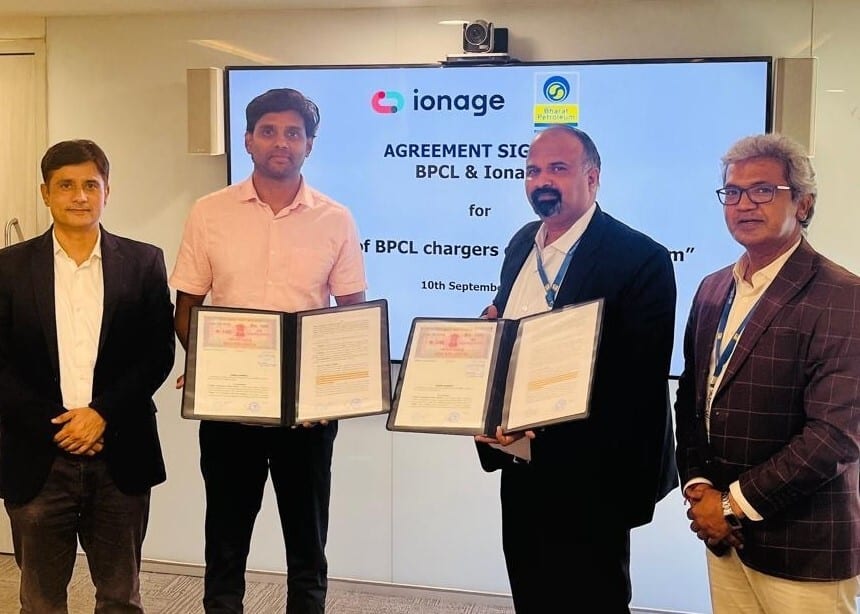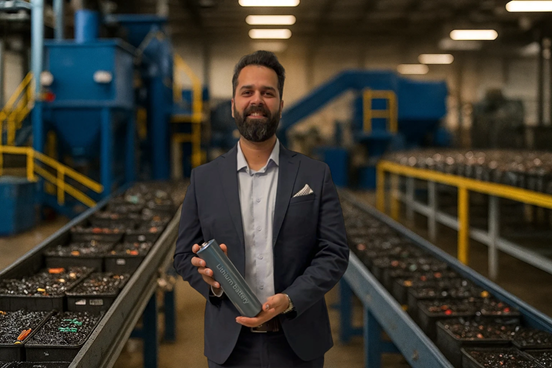Text: Bhargav TS
The Society of Indian Automobile Manufacturers (SIAM) organised its 55th annual convention in New Delhi on September 2, 2015. The event focused on the theme “Automotive Mission Plan: Make in India” that emphasised on issues influencing the Indian auto industry such as competitiveness, growth and future developments. The convention also witnessed the curtain raiser for the Automotive Mission Plan 2016-26 (AMP 2026). This is the second edition of the Automotive Mission plan after the 2006-2016 plan. AMP 2026 is the collective vision of Government of India and the Indian Automotive Industry.
While delivering his inaugural address, President of SIAM Vikram Kirloskar said that the industry has finally turned the tide and the 3 year-long slowdown is finally getting over. “August was the seventh consecutive month where the auto sales were positive. The market sentiment is now changing. The monsoon has been better and bodes well for the industry. However, it is still not a smooth sailing for auto industry and there are speed breakers that need to be addressed, most of which are related to government policies.”
The vehicle industry was most highly taxed industry in India. Central and State Taxes account for prices being escalated by as much as 62% for small cars while for the larger and more luxurious models this figure goes up to 82%. Kirloskar pointed out that, auto industry is a highly taxed sector which keeps a tight leash on the growth that the industry is capable of. The tax in this industry is as high as 84% in some of the vehicle sector which is hampering the industry and needs to be addressed.
He also mentioned that safety standards should be addressed, which is there in the vehicles in India. While the OEMs are expected to add more safety features and improve fuel efficiency, they are unable to increase the price of the car because of the price sensitive market. “Lot of the safety norms are being followed in India because they are there in other developed markets. This is not correct. We should look at safety features according to local needs,” said Kirloskar.
Nitin Gadkari, Union Minister for Road Transport, Highways and Shipping said that the industry should increase its pace to make the switch. “We all are seeing how the country is being polluted. A new regulation is coming from the green tribunal as the increasing pollution in the country does not allow us much time in moving from Euro IV to Euro V to Euro VI. Government has been mulling the option of creating a new department of transport which will be headed by a new Secretary. The new department will have experts which will be abreast with the technical knowledge so that regulations can be designed better with PMO approval.”
As road infrastructure is always the backbone of the auto industry, Gadkari mentioned that the highway construction has now reached 14 km per day. The government is looking to expand the highway network to 1.5 lakh kilometres up from 96,000 km which will be cleared in the next 3 months. The government has already approved 9 PPP projects, he revealed.
The President of ACMA and Chairman, Subros, Ramesh Suri said, “In 2014-2015, the auto component industry earned $38.5 billion, grew by 11% over the previous year. Automotive and auto component industry account for 40% of manufacturing industry.”
In his chief guest address, Dr RS Katoch, Secretary, Ministry of Heavy industries and Public Enterprises, GoI said, “We have been trying to support the industry and trying to devise policies which would help the industry.”
Addressing a plenary session, Markus Heyn – Member of Board Management, Robert Bosch said, “India is a key growth market for Bosch, where we have 12 manufacturing plants in India. There are 3 trends we are witnessing – powertrain and electrification, automated driving and connected mobility. Choosing the technology with optimal total cost of ownership is key to solutions in India, regarding powertrain. In electrification, hybrids are gaining momentum and for this reduced battery cost is a main driver. BS V technology is essential before introducing BS VI. In automated driving, a revolution is coming step by step. Fully automated driving cannot be expected before 2025, because a lot more R&D is required. Before fully automated driving, automated parking will come.”
The last session witnessed the unveiling of the AMP 2026. The document is aimed at setting targets and goals for this sector over the next 10 years. It addresses areas of relevance including growth in terms of size, contribution to India’s development, global environmental footprint, technological maturity, safety, competitiveness, and institutional structure and capabilities. The first Automotive Mission Plan (AMP 2006-16) was implemented in 2006, has till date witnessed several progressions of evolution of the Indian automobile industry with many of its objectives being met while others being fulfilled by the end of the stipulated period.
R Raghuttama Rao, Managing Director, ICRA Management Consulting Services (IMaCS) presented the vision of the document. Talking about the key achievements of the AMP 2006-16, he said that the investments under AMP 2016 exceeded Rs 160,000 crore. The industry is poised to generate more than 35 million jobs by the end of 2016. The industry is on-course with the AMP 2016 to hit the base-case target of Rs 549,000 crore of industry revenue by the end of FY16.
Stating the vision of AMP 2026, he said, “By 2026 the Indian automotive industry will be among the top 3 in the world in engineering, manufacture, and export of vehicles and components and will encompass safe, efficient and environment friendly conditions for affordable mobility of people and transportation of goods in India comparable with global standards, growing in the value to over 12% of India’s GDP, and generating an additional 65 million jobs. We are striving to foster the promotion of ‘Brand India’ by developing a sophisticated ecosystem of research, design and engineering.”
In the recent past, the biggest achievement is rolling out the new FAME scheme, which has given big boost to the industry, since then there is a 25% increase in sales of electric and hybrid vehicles. The industry is excited in new opportunities like ethanol and biodiesel vehicles. It would not hesitate to invest in these, if given proper policy norms. The 1 day convention focused on issues influencing Indian automotive industry’s competitiveness, growth and its integration with the global economy. The event also emphasised for a proactive government to look on the electric and hybrid mobility.











Leave a Reply